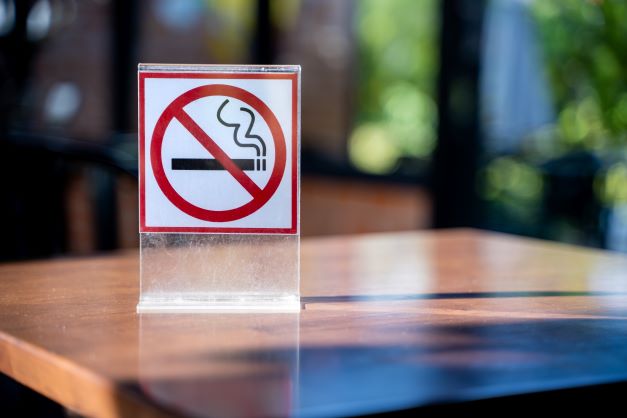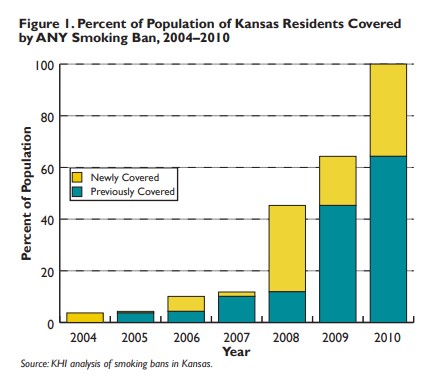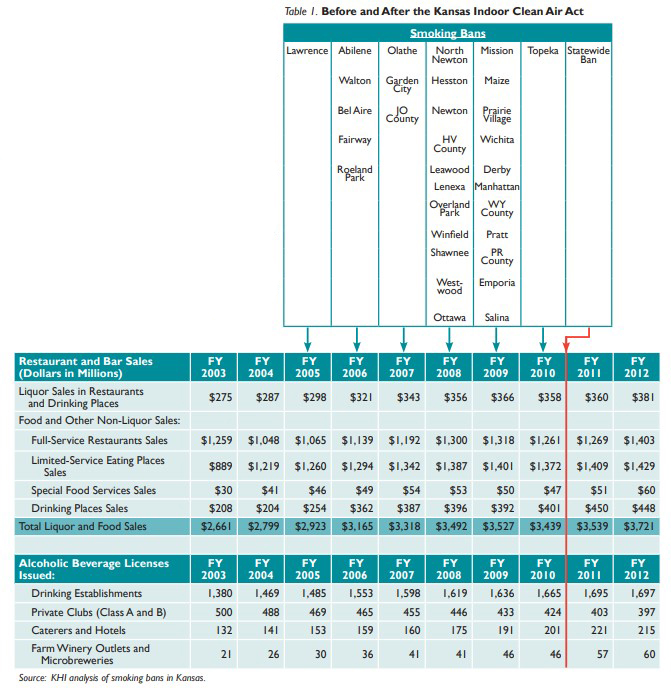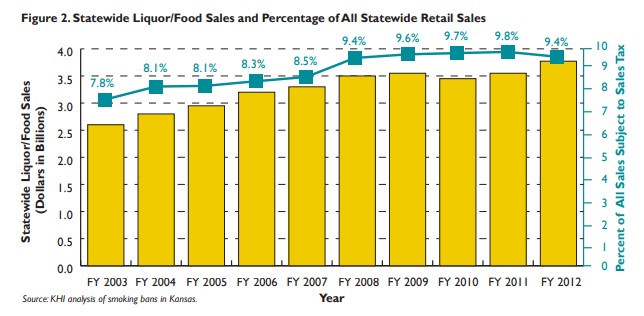Alcoholic beverage license data also shows that neither the local ordinances nor the statewide smoking ban were associated with any reduction in the number of establishments serving alcohol. The number of licenses issued in the main category of drinking establishments increased in each of the years for which we reviewed data. The increases have been especially large in the years that smoking bans have been implemented. Only licenses for private clubs have declined and that decline is clearly part of a longer-term trend that started before a large number of local governments had implemented smoking bans. Also, private clubs licensed before January 1, 2009, were given the option to continue to allow smoking after the statewide ban began.
The data does not show a negative effect of the statewide smoking ban on the overall restaurant and bar industry in Kansas. However, the sales at individual businesses could have been affected either positively or negatively by the statewide ban as the marketplace adjusted to the new regulations.
Other Studies
The conclusion that the Kansas Indoor Clean Air Act was not associated with a drop in restaurant and bar sales in the state is consistent with the results of peer-reviewed studies from around the United States. Those studies also found no broad evidence of an association between smoking bans and long-term negative economic impacts on the restaurant and bar industry.
A comprehensive review by E. J. Hahn, published in the American Journal of Preventive Medicine in 2010, examined multiple economic studies of smoking bans, and concluded that there was no evidence of smoke-free legislation negatively impacting businesses. Two recent studies from Minnesota and Missouri also found no evidence of economic harm from smoking bans implemented in those states. The 2012 study of eleven Missouri cities not only concluded that there was no economic harm, but that smoking bans contributed to significantly increased restaurant and bar sales in eight of the eleven cities studied.
Policy Implications/Conclusion
Policymakers will likely continue to review the Kansas Indoor Clean Air Act and may consider changes that either make the ban more comprehensive or allow more exemptions. If the primary goal is protecting public health, then policymakers may want to repeal some or all of the existing exemptions, thereby increasing the number of public places covered by the ban. If, on the other hand, the primary concern of policymakers is protecting the prerogatives of private businesses, then preserving or even expanding the number of exemptions to the smoking ban could achieve that objective. However, as this analysis makes clear, there is no apparent evidence that smoking bans in Kansas have been associated with a decrease in statewide restaurant and bar sales, or with a decrease in the number of establishments serving liquor.



